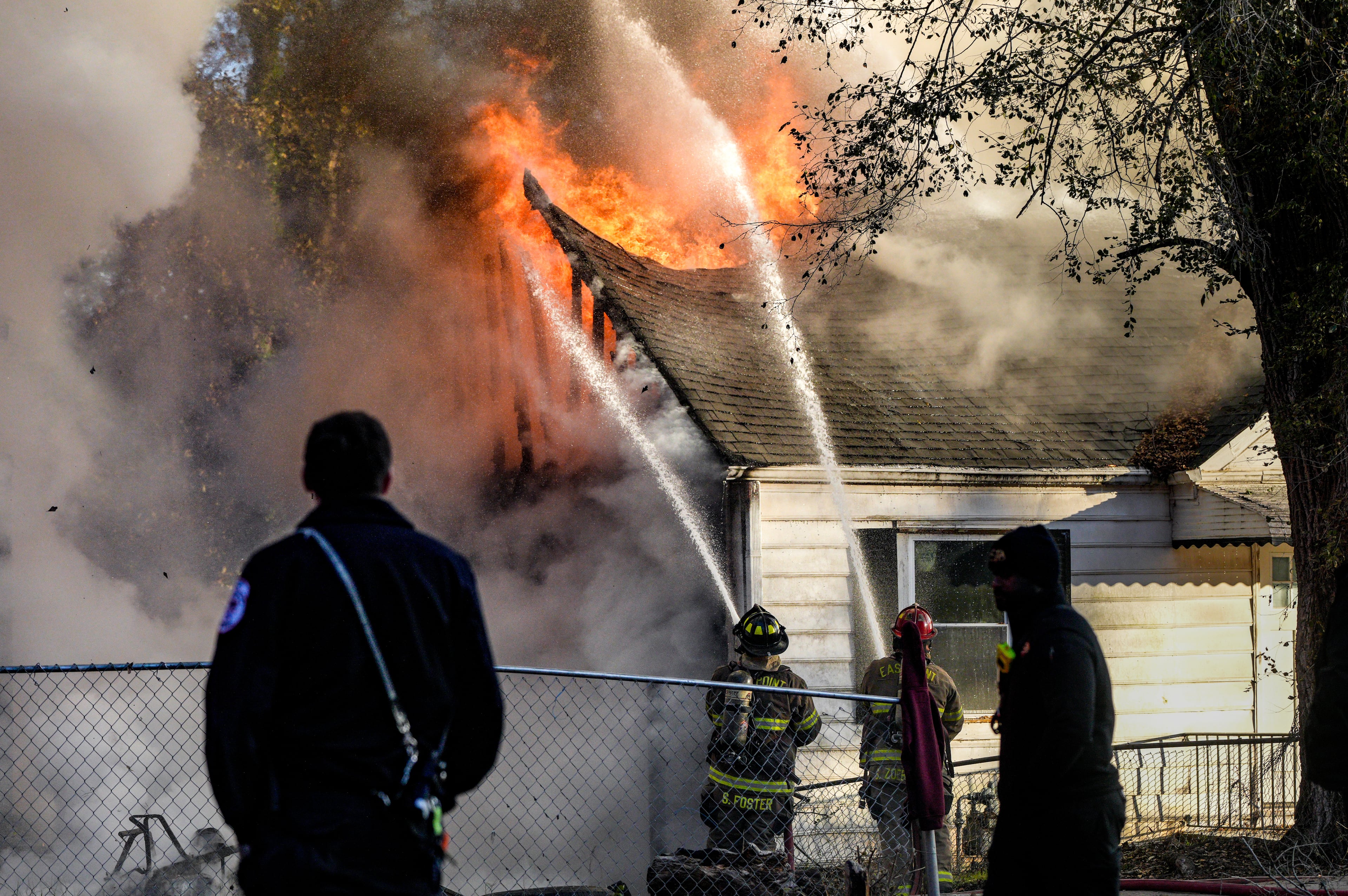Georgia’s peak tornado season has ended. Here’s where all 36 twisters hit.

With as many storms as metro Atlanta has been getting lately, it may not feel like it, but Georgia’s most volatile period for weather is mainly behind us.
Yes, we still have the Atlantic hurricane season to deal with; it runs June through November. But March through May is known as severe weather season, and those months are Georgia’s riskiest for that other terrifying natural disaster: tornadoes.
So far this year, the state has seen at least 36 twisters that damaged homes and other structures, according to National Weather Service data analyzed by The Atlanta Journal-Constitution. Two people were injured in the season’s strongest tornado, and the larger storms that spawned other twisters were also dangerous and deadly.
Twisters can spin up any time of year when the right ingredients come together: warm, moist air near the ground with cooler, drier air aloft and wind shear — a quick change in wind speed or direction. Those conditions are most likely to occur in the spring as winter’s chill warms to summer. Predictably, there is another spike in severe weather during the fall.
This year, the jet stream — bands of strong winds in the atmosphere’s upper levels — has been “unusually active deep into May” and even beyond, Channel 2 Action News meteorologist Brian Monahan said.
”This provided the conditions for the spring severe/tornado season to be active much later than usual," he said.
This year’s count of 36 twisters is up considerably from the same period last year, when 21 struck between January and May, but the 2025 tally so far is consistent with the norm. Typically, Georgia sees 35 to 40 twisters in the spring, said meteorologist Lindsay Marlow with the Peachtree City office of the NWS.
“The majority of our tornadoes coming during the daylight hours thankfully likely helped limit injuries during such an active year,” Monahan said.
About two-thirds of this year’s twisters formed during daytime. Although more than half of last year’s twisters also struck during the day, they were stronger and, therefore, left more injured — nine — and caused more damage, according to data reviewed by the AJC.
For context, the average tornadic wind speed this year was 86 mph; last year it was 96 mph.
This year, the strongest twister was an EF2 that struck May 29 in Henry County in the middle of the afternoon. It was responsible for the state’s only two injuries attributed to tornadoes this season when its 135 mph winds obliterated a home just north of Locust Grove and west of I-75.

Malachi Chaney, son of HBO’s “The Wire” actor Tray Chaney, was badly injured when he was tossed nearly 300 feet into the woods behind their house, leaving him with broken ribs and facial fractures.
His father, who was less severely hurt, told the AJC the next day that Malachi was “fighting hard” in the hospital. Tray Chaney updated his social media followers recently to say his son had been admitted to a rehabilitation center to continue his recovery after spending multiple days in the intensive care unit.
The family has launched a GoFundMe campaign to help them rebuild after the tragedy. So far, they have raised more than $100,000.
The majority of this season’s twisters touched down around the area on the southside of metro Atlanta, concentrating in Henry, Coweta and Spalding counties. But northwest Georgia’s Gordon County had the most twisters — four — to hit a single county this year.
Farther southwest in Muscogee County, another father and son were caught in the path of a tornadic storm, only they did not survive. Former Columbus police officer Matthew Collins Jr., 29, and his father, Matthew Collins Sr., 58, were crushed by a falling tree as an EF1 twister crossed the Bull Creek Golf Course on April 6.
Their deaths were not attributed to the tornado, because they weren’t in its direct path. Violent winds that topped 75 mph brought down the tree under which they were trying to seek shelter, the National Weather Service said.
Although the most severe risk for tornadoes is behind us, there are plenty of weather dangers ahead. Severe storms that hit June 7 didn’t produce tornadoes but were blamed for a man’s death in northwest Georgia after a downed tree crushed his car.
And the next big threat is already lurking: hurricanes.
Being so far inland, metro Atlanta’s main threat during hurricane season is flooding, NWS meteorologist Ty Vaughn said. Tropical systems dump a lot of rain as they move across the Southeast, and there is still potential for tornadoes to spin up in such storms, Monahan explained.
“The tornado risk generally depends on what side of the storm we end up on,” he said. “Storms that track over us or go to our west are generally the ones that bring us the risk of severe weather — including tornadoes."


